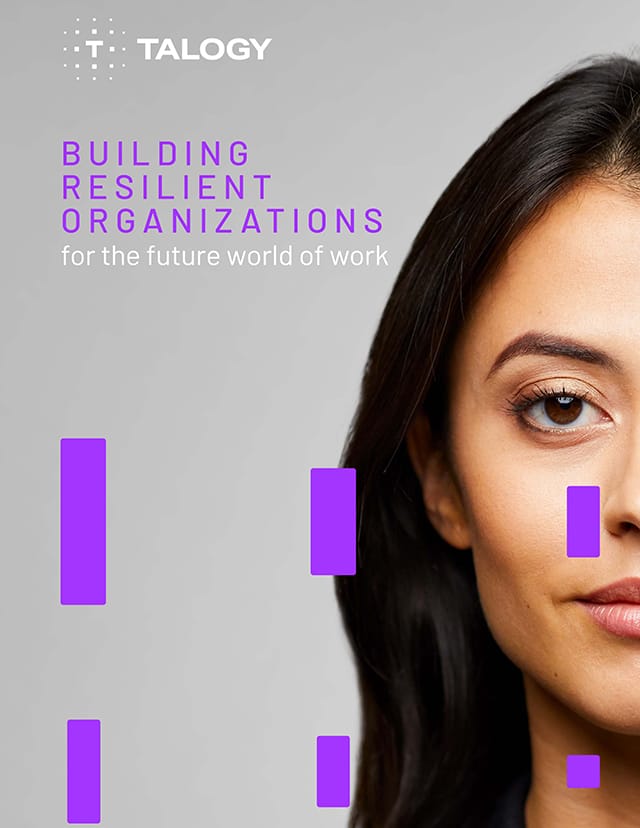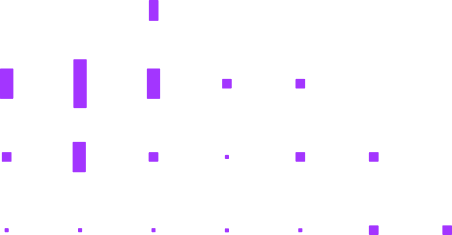Written by Ngoc (Lee) Duong, Psychometrics & Data Analysis Consultant
In today’s global and complex environment, organizations often need to acquire new or additional resources, such as particular employee skills or technological equipment, to keep up with evolving business demands. But as the saying goes, “The only constant is change,” and some resources deemed necessary today may become obsolete by tomorrow, which raises an important challenge for organizations and their employees.
Specifically, organizations must consider how to identify skills gaps and then develop strategies for how to address those skills gaps within their workforce to ensure they remain competitive. This involves selecting, retaining, and upskilling employees with the necessary skill sets. Meanwhile for an employee, it means understanding what a skills gap is and recognizing what gaps exist within their own professional development. By addressing skills gaps proactively, both organizations and employees can better adapt and remain relevant in a complex and evolving labor market.
What is a skills gap?
A skills gap can be defined as the discrepancy between an employee’s skill level with the job’s requirements, such that the employee’s skill level is lower than what is required for their job. Because of this, having a skills gap is not only detrimental to the individual employee’s performance, but it can also negatively affect an organization’s performance. Thus, understanding how to identify skills gaps is a critical step in ensuring the effective functioning of an organization.
Skills required for a job can be broadly categorized as either hard skills or soft skills. Hard skills refer to the specific, tangible skills that you need to perform a task (e.g., being able to operate a computer software program or knowing which statistical analysis to apply on a dataset), while soft skills refer to one’s ability to interact and communicate effectively with others to accomplish work tasks (e.g., leadership, conflict resolution, etc.). These days, it is common to hear about organizations specifically targeting these particular skills with a skills-based hiring approach.
The role of hard skills and soft skills in the workplace
In the workplace, hard and soft skills are equally important for one to effectively perform their job. Furthermore, knowing which type of skill you need to develop is critical as the strategies to close the gap for each skills type can differ from one another. Up until last year, I was working on an academic career track with my doctorate study in Industrial/Organizational Psychology. However, I decided to switch to a consultant career by joining Talogy as a full-time consultant. While much of my training has prepared me immensely for my job, there are still pieces that I felt like I needed to grow and further develop – a skills gap you might say – to make sure that I can successfully perform at the pace that is required of me.
Research has suggested that hard skill trainings are more likely to result in better training transfer (how well the trainee can apply the learning content to their job) than soft skill trainings because the feedback on hard skill training is clearer and more specific while feedback on soft skills is more nuanced and complex. Thus, if it is soft skills that you are trying to enhance, it may be helpful to remember that this process may take more time and practice.
It is important to note that my focus here is on describing the proactive strategies that individuals can engage in to minimize their skills gap, though, organizations can be proactive in managing their employees’ skills gaps in a number of ways. These can include:
- Performing needs analysis – This involves a systematic process of identifying and evaluating the potential gaps that an organization and its employees have. The result of this type of analysis is often followed by the development of an intervention or training program that aims to close the gap.
- Providing employees with resources (e.g., training and developmental opportunities) – Many organizations already have plenty of training and developmental resources that are readily available for their employees to take advantage of. Taking extra steps to routinely remind and encourage employees to use these resources is critical to help them become proactive in their professional development journey.
- Cultivating a growth culture – This involves making sure that the workplace is a psychologically safe environment, where employees feel that it is okay to be vulnerable, voice their unique perspectives, and engage in appropriate risk-taking behaviors. Having this type of atmosphere enables employees to independently and proactively close their skills gaps.
How to address individual skills gaps
There are different ways to go about identifying and ultimately resolving individual skills gaps. Here are four practices that I personally utilize to make me aware of my personal skills gaps and working to alleviate them altogether:
1. Seek feedback
We are limited by what we know and what we can see. Because of this, one of the things that I do often is to reach out to my colleagues and manager for any feedback that they may have to help me improve my skills. These individuals are the ones that I work most closely with and given our similar scope of responsibilities, they have insights that can be instrumental to improving my skills.
When seeking feedback from peers, you may also learn about potential resources such as training and development programs within your organization that can help to close your individual skills gap. However, there are two important caveats that must be considered if you are planning to seek feedback from others:
- Seeking feedback must be done with the genuine purpose of improving your skills and abilities. If it is done simply to manage your professional image, it is unlikely that you will receive the information that you need to close your skills gap.
- The workplace can be a political arena that is filled with competition. In this type of environment, asking for feedback from your colleagues may result in others engaging in unethical behavior that diminishes your growth opportunities. If you are in this type of environment, make sure that you seek feedback from someone that you trust.
2. Prioritize observational learning
As simple as it may sound, identifying ways to close your skills gaps does not have to be overly technical – it can be done by simply observing others. This idea stems from the observational learning perspective, which states that we can easily learn and develop ourselves by – you guessed it – observing others.
During this process, I pay attention to the behaviors or skills that I am trying to learn, process and work to retain that information, then attempt to replicate it on my own. I found this to be a particularly relevant approach to my current role as a consultant. Since much of my training involved conducting research and teaching college students, I did not have a lot of experience with interacting and communicating with external clients.
As a result, I seek out opportunities to sit in on calls where I can watch how my colleagues interact with clients. During these calls, I take note of their exchange and then seek the opportunity to practice what I’ve learned and tailor the approach to what works best for me. With each round of practice, I ask for additional feedback to further develop my client-interaction skills.
3. Leverage your external network and professional resources
Leaning on your network and connections outside of your organization can also be a helpful way to identify potential skills gaps. This is because those within your organization are more likely to possess similar knowledge as you do, so those outside of it may be aware of different, new, or emerging skills in the market. A study by Higgins and Thomas found that those with high quality mentorship from both within and outside of their organization are more likely to result in better career outcomes (e.g., promotion) as compared to those with only a single quality mentor.
Alternatively, you may also consider joining a professional organization to access networking and resources that can better help you learn how to identify skills gaps. For instance, I am a member of the Society of Industrial and Organizational Psychology (SIOP), a well-known organization in my profession. Every year SIOP hosts a conference where people network, present research and practical advances, and attend professional workshops to further their skillsets – all practical ways to address any of your individual skills gaps.
4. Exercise resourcefulness
Given the attachment to our phones and technology in general, we can access industry insights, market trends, and emerging skills within seconds. For instance, there is a podcast that I listen to every week (Coaching for Leaders by Dave Stachowiak) to hear experts’ perspectives on relevant topics in the workplace. By listening to this podcast, I have learned about skills that I can apply to my work and further develop myself as a consulting professional.
In addition to these basic resources, recent advancements in generative artificial intelligence, or generative AI, also provide us with a powerful tool to identify areas where our skills can be improved. For example, when I get stuck while writing analysis syntax and not sure how to address it, I use ChatGPT to help identify a solution and use this as an experiential learning moment.
It’s worth noting that despite the powerful utility of these tools, taking advantage of these resources must also be accompanied with critical thinking. With the abundance of available resources and information, we must be selective and use only the most appropriate and accurate information to guide our strategy to bridge our personal skills gaps.
The ongoing process to address skills gaps
As business demands evolve and technology continues to progress, skills gaps will continue to be an important challenge for many employees and organizations. Because of this we need to be proactive and resourceful, constantly working to close our skills gaps to not only be better at our jobs, but to also enhance the efficiency of our organization.
I have found success by participating in the activities that I’ve shared here to identify my own skills gaps, but it’s important to note that this is far from an exhaustive list. Consider tweaking these ideas or coming up with your own. For example, if soliciting your manager for feedback seems intimidating, try starting with just one trusted co-worker or friend for areas where you can improve. Or if listening to podcasts isn’t your preferred medium to learn, try signing up for a weekly industry newsletter or joining a LinkedIn group that shares relevant industry updates.
The important part is to take that first step. Find what processes work best for you and then continue to utilize and revisit them because your skills gaps will inevitably change. These exercises can yield a massive individual return for you without taking up too much of your time, while also keeping you adaptable to the constant pace of change going on around us.




